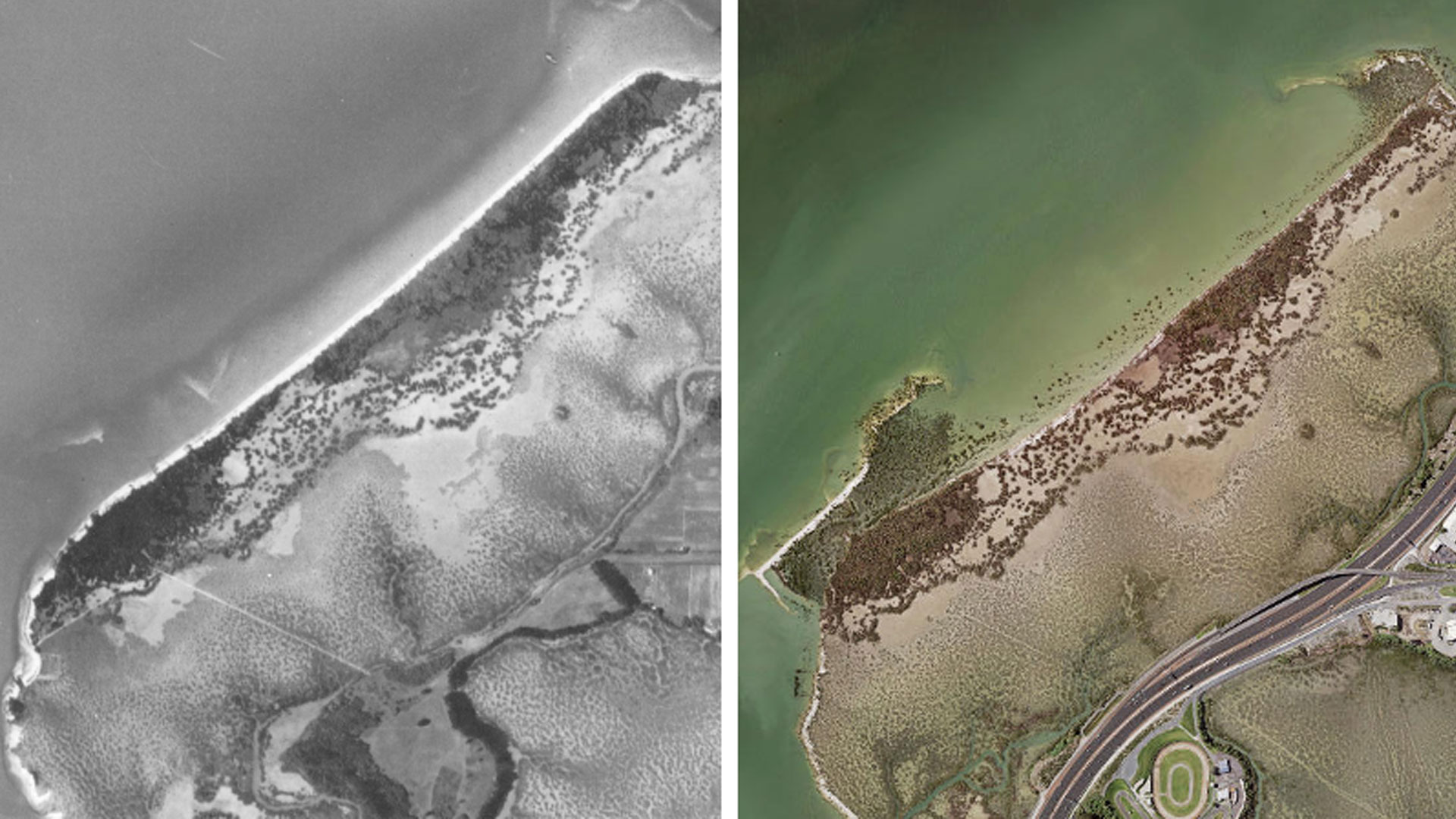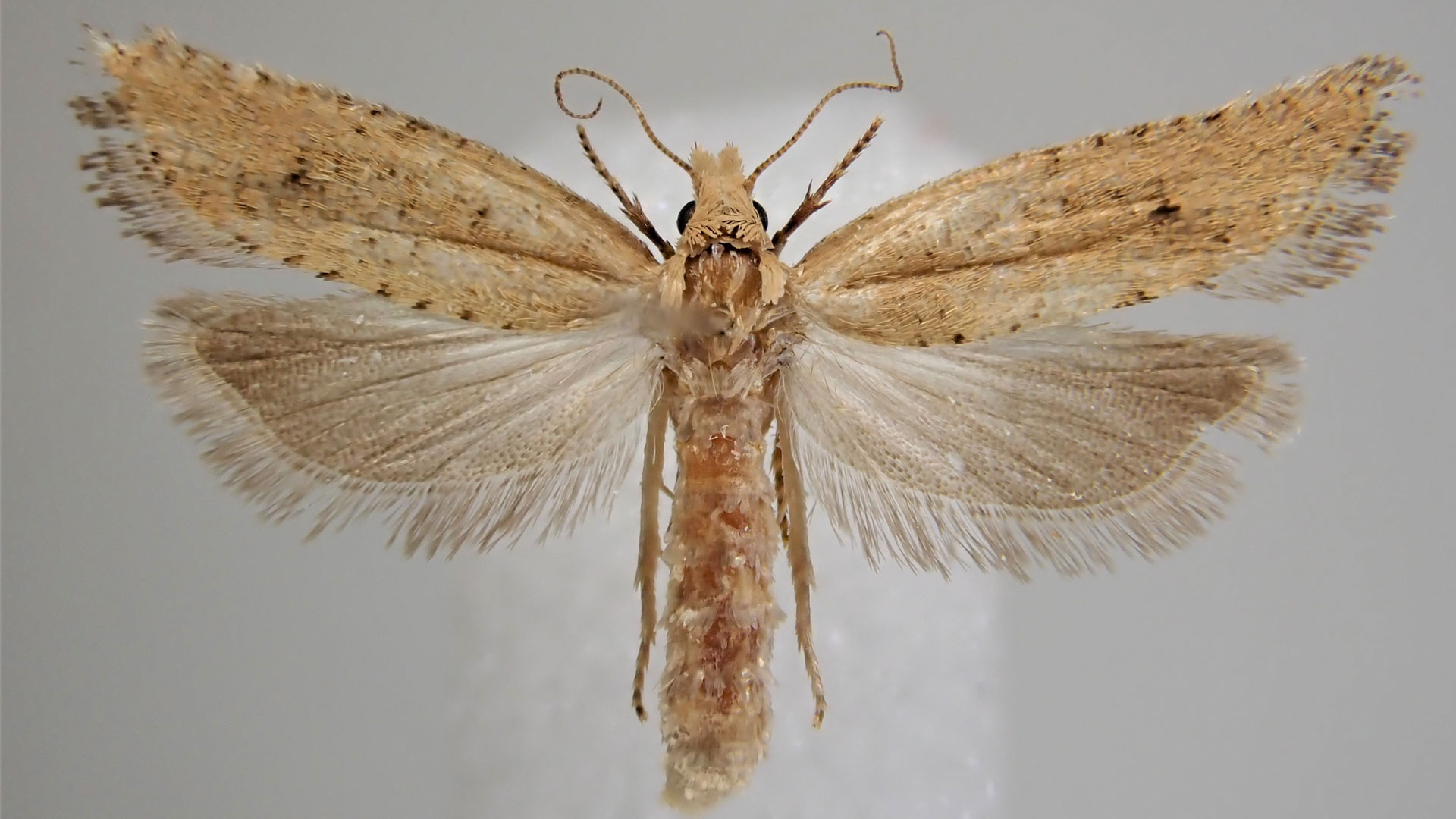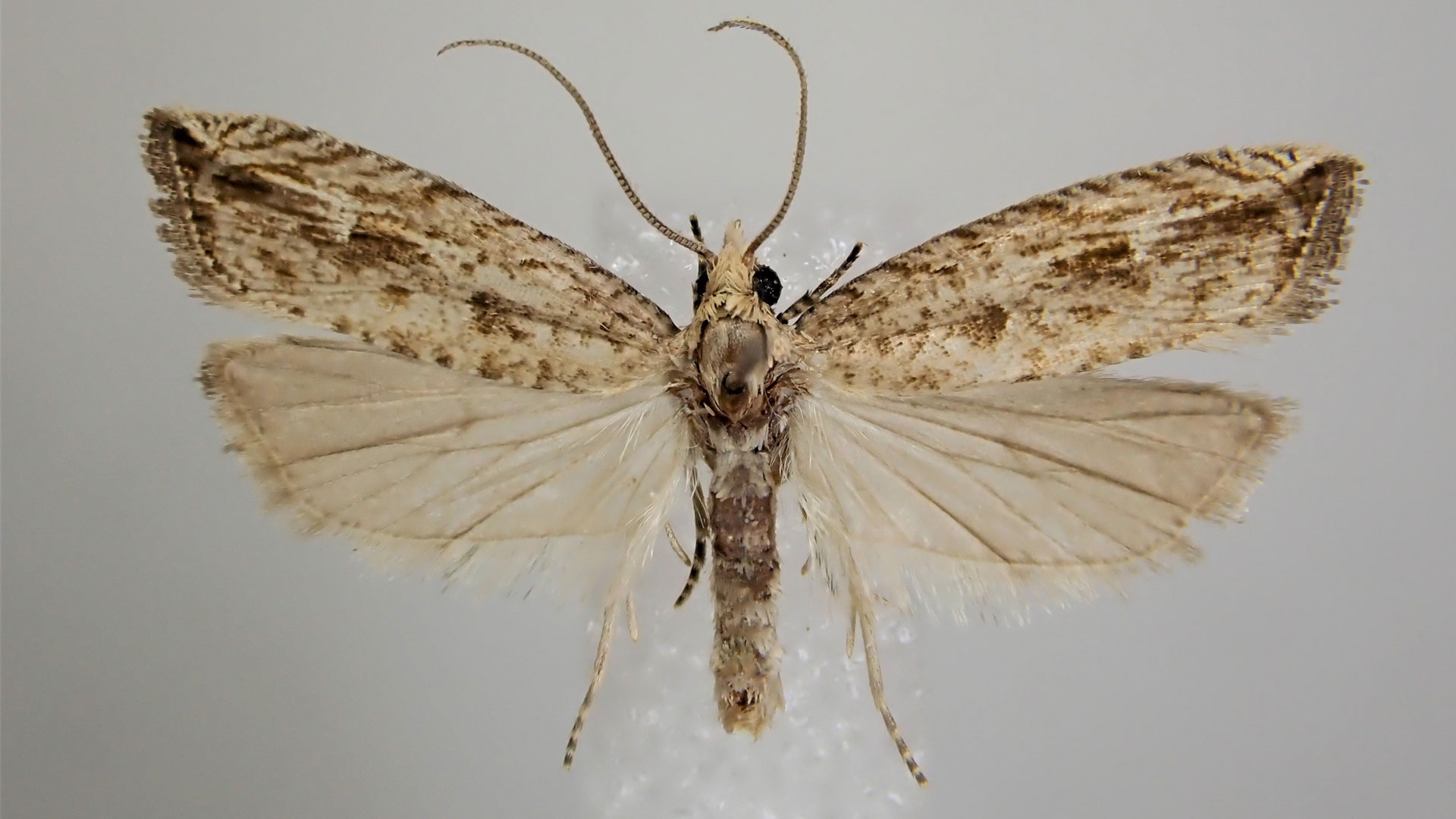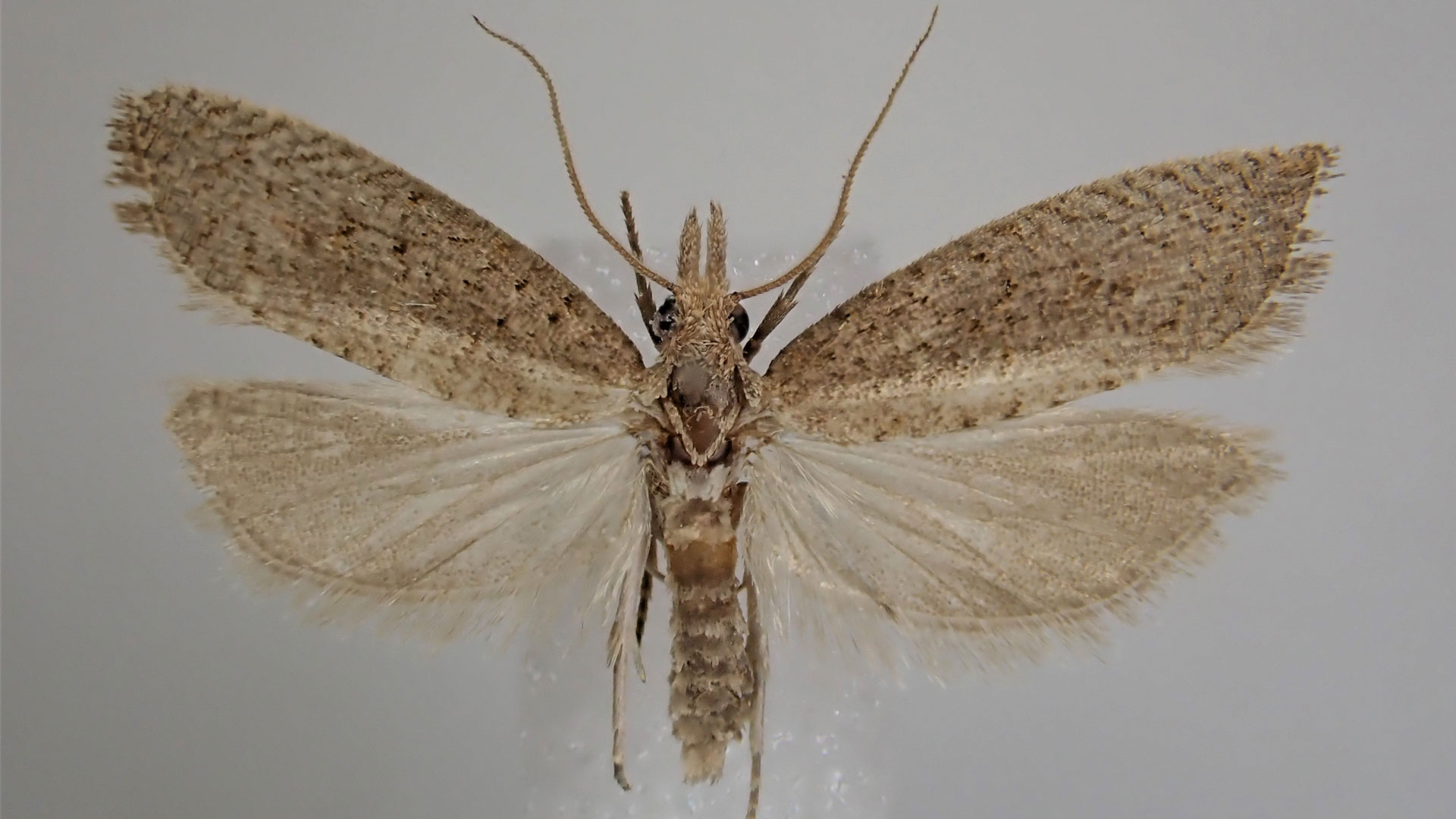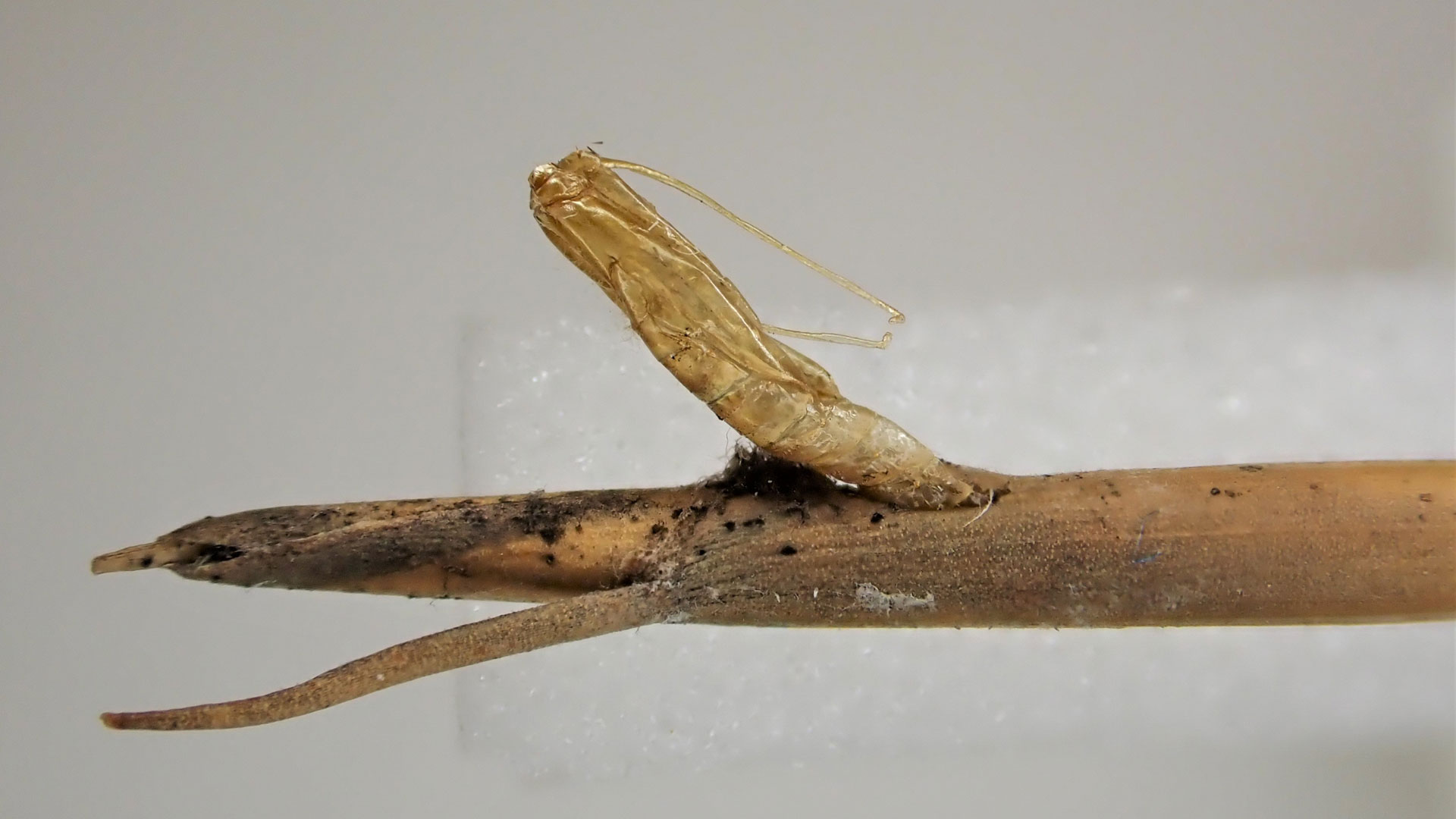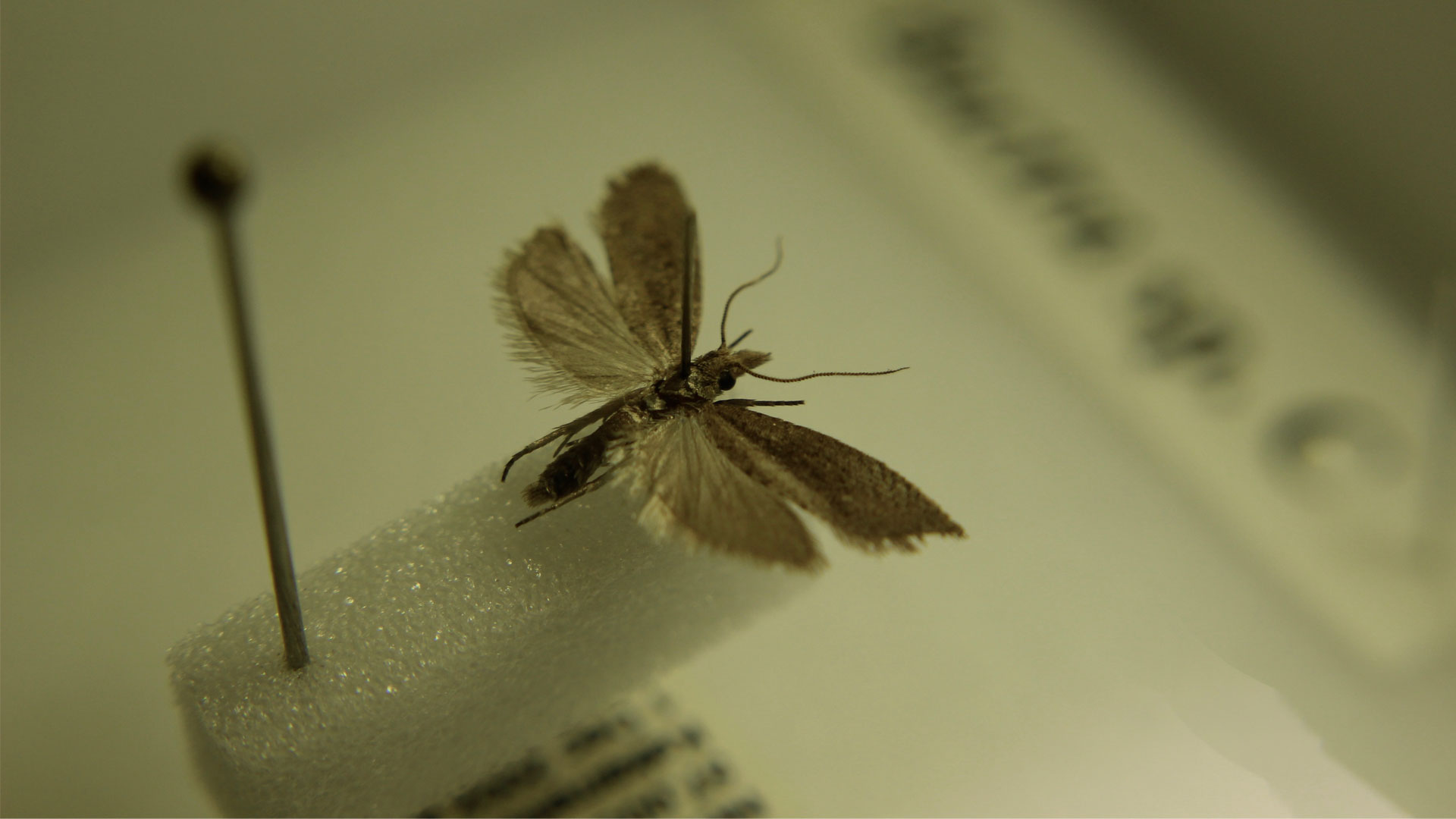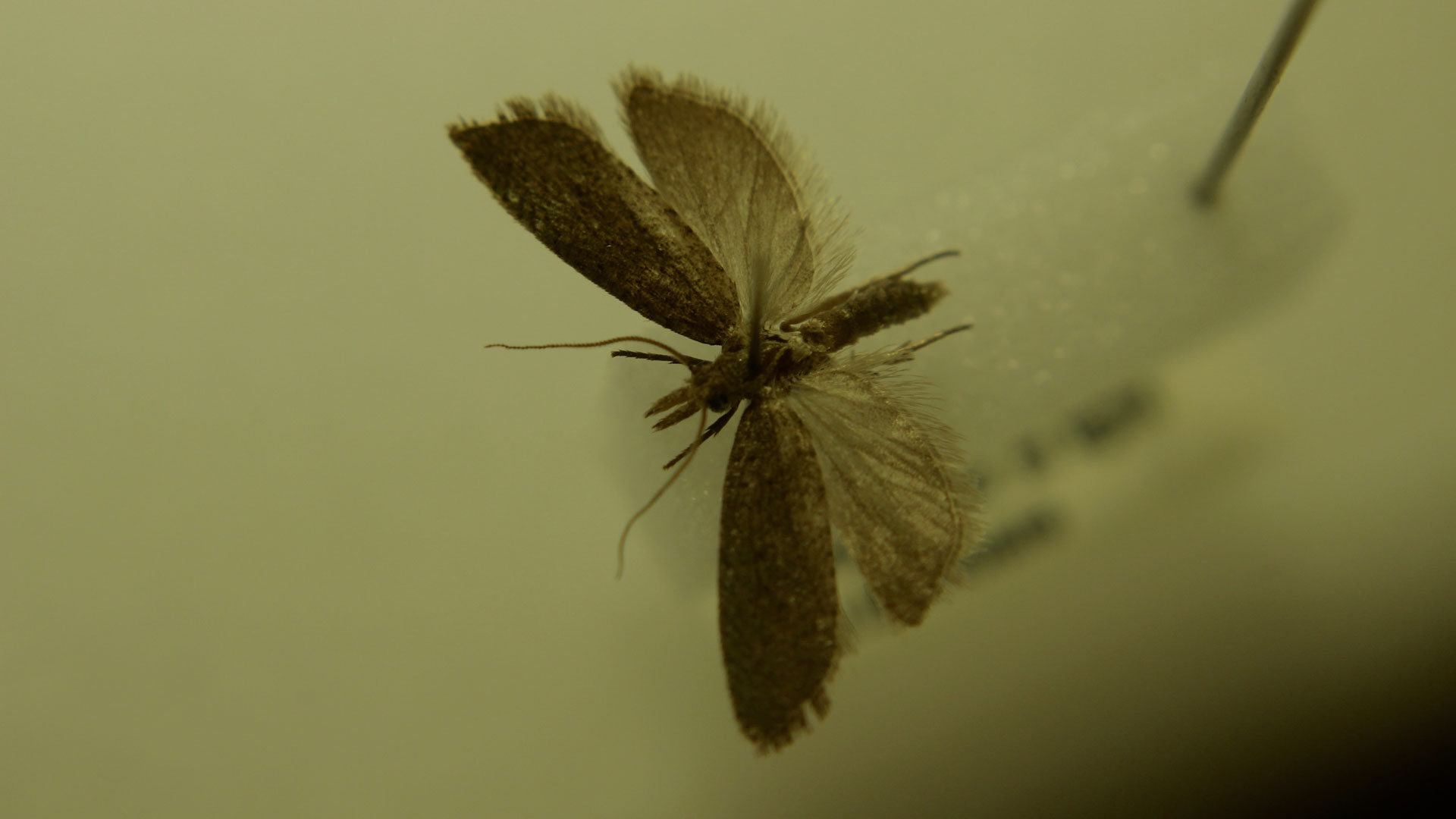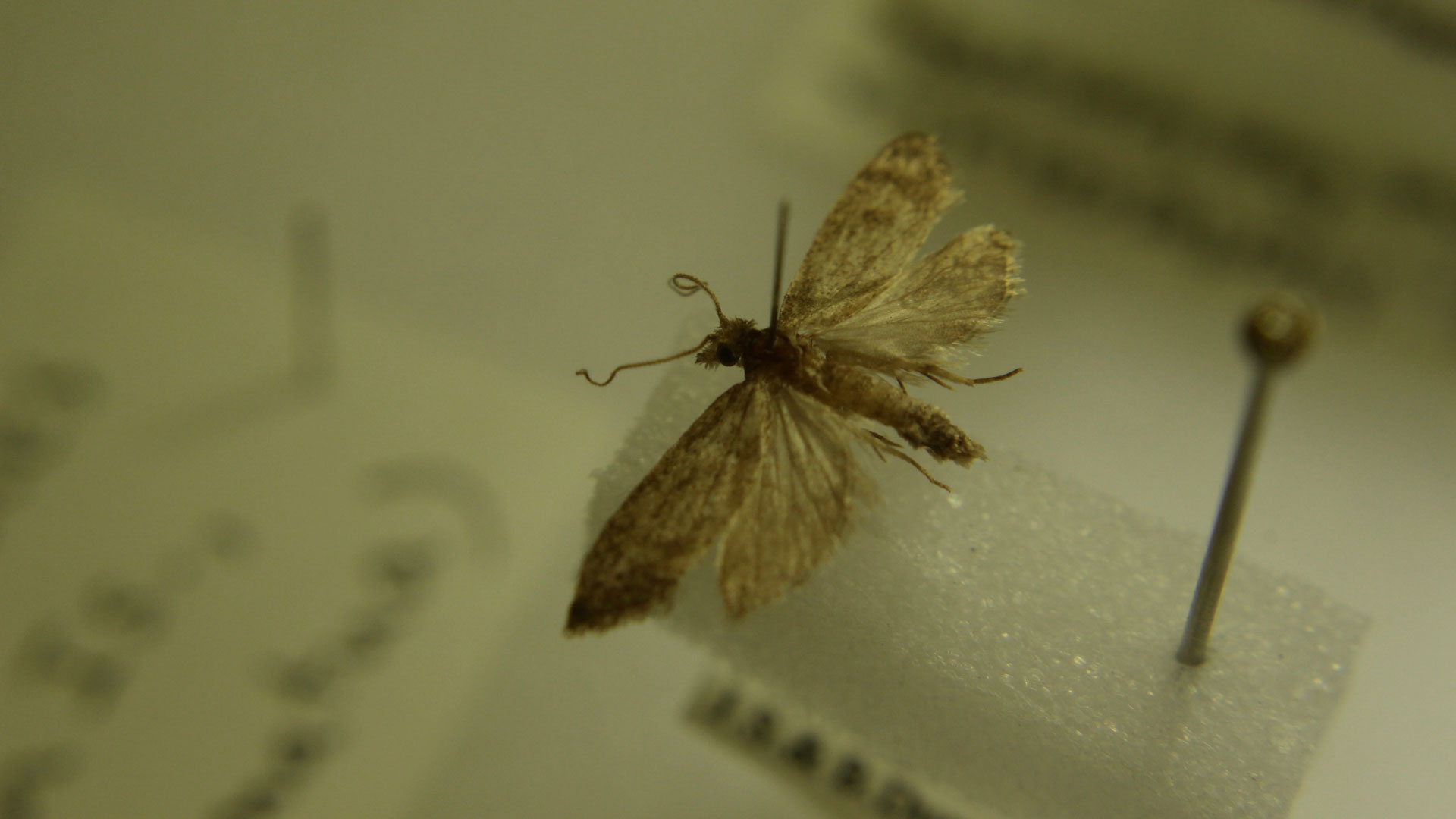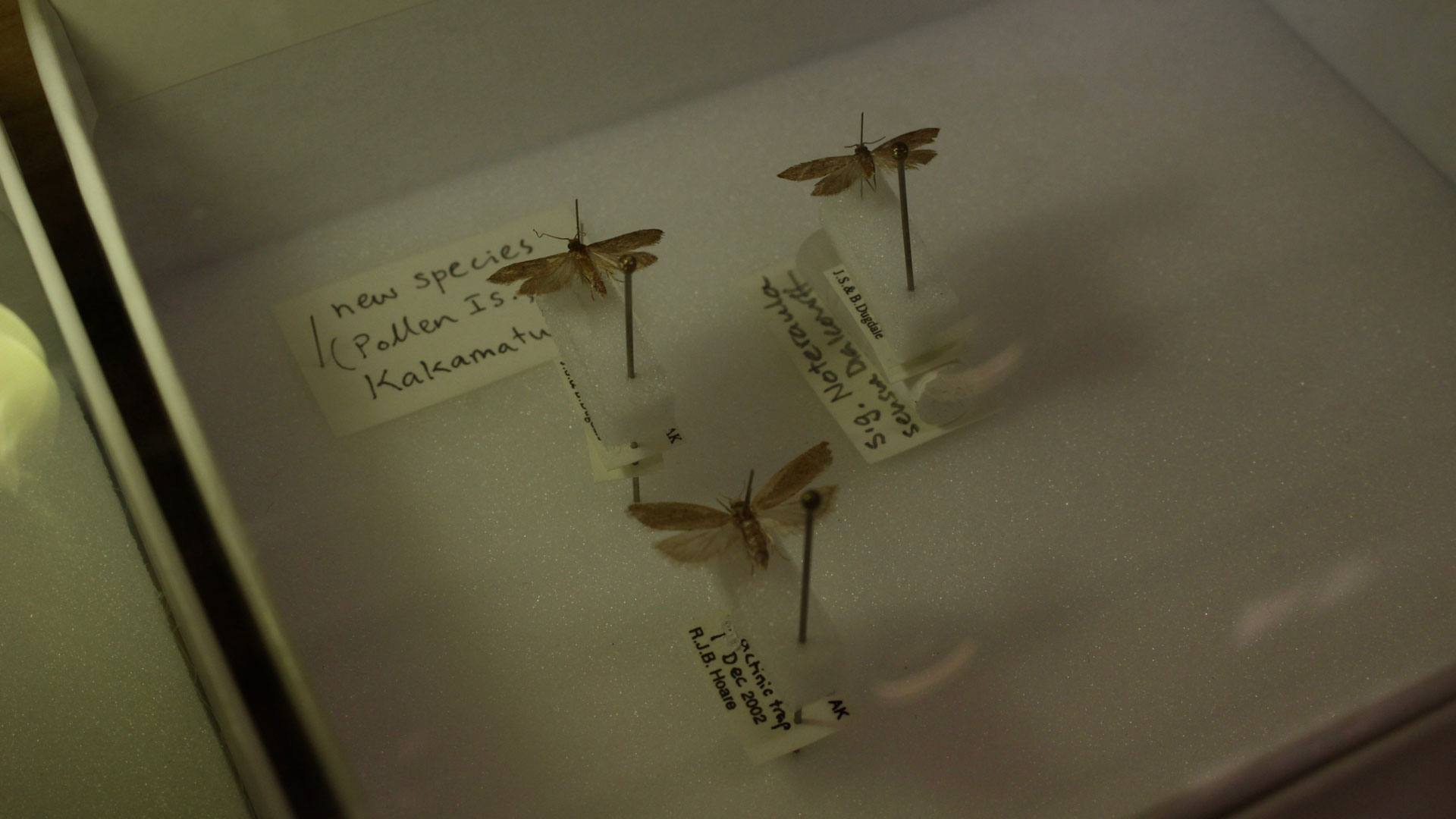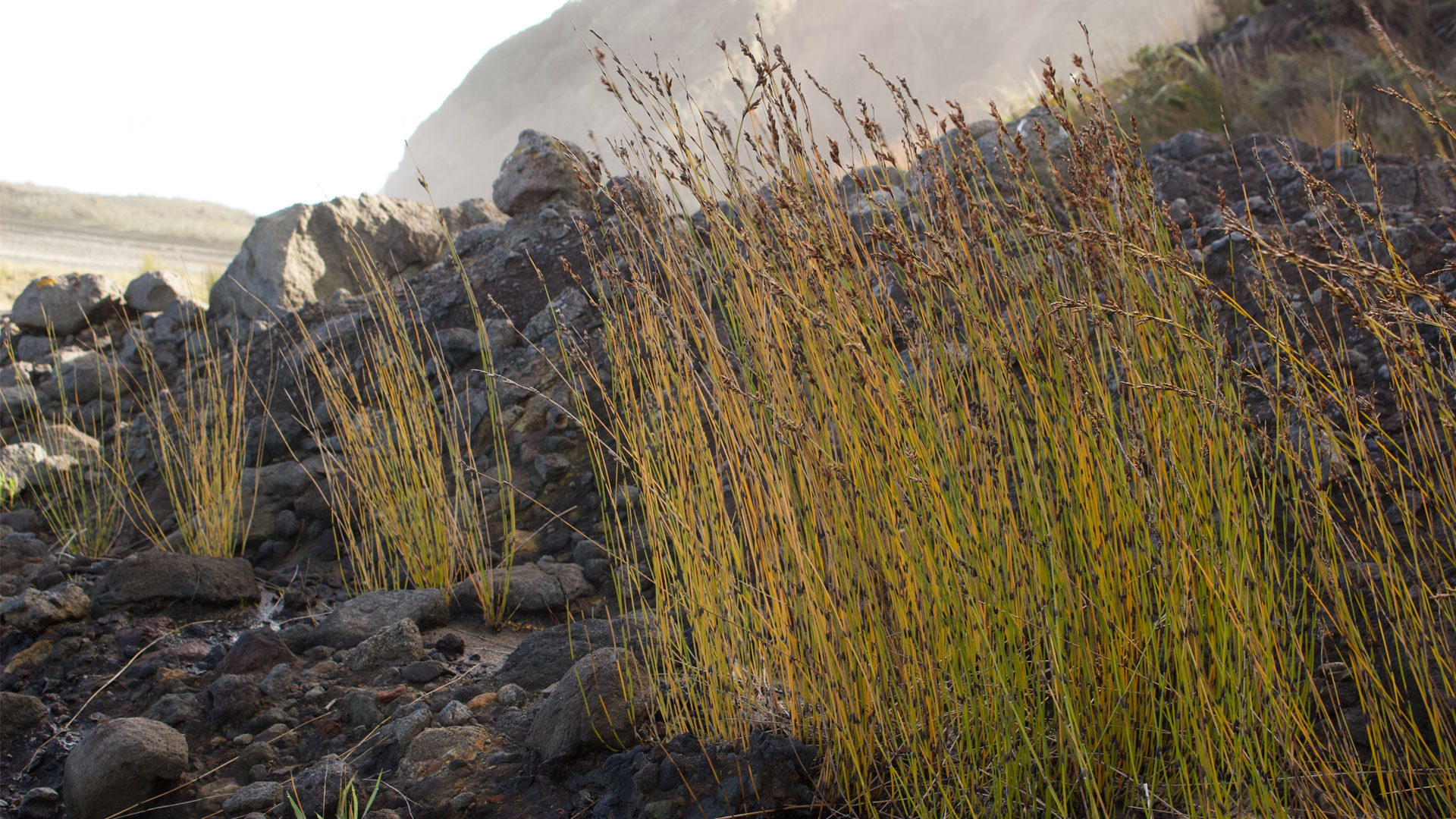This is the story of a small, brown, rare and mysterious moth. For most people, it may not be particularly exciting to look at and in a line up, few would recognise it. It’s story, however, is an important one for it epitomises the inattention that many of our less-charismatic native animals face, hidden beneath the shadow of icons like kiwi and kākāpō.
The Pollen Island moth (Bactra ‘Pollen island’) is an undescribed species. This term may need an explanation: before a newly discovered species is given an official name, it requires a formal description to be written about it, and that description must be published in a peer-reviewed scientific journal or similar publication. That way, everyone knows exactly what the species is and how it differs from others. It also gets a unique name for us all to refer to it by. These descriptions are usually long, complex and highly exhaustive. They detail the creature’s morphology (how it looks), ecology (what it does), and these days, often it’s genetic identity. Entomologists (scientists which study insects) find new species all the time and, with comparatively few entomologists around to process them, it’s not surprising that there is a backlog.
The New Zealand insect fauna is full of undescribed species. Only about half of our estimated twenty-thousand-ish insect species have names and formal descriptions. The others, like the Pollen Island moth, sit in limbo. Ask a lepidopterist (an entomologist who studies moths and butterflies) and they will tell you how and why that moth is different from another. Making it formal, however, is a different matter. One of the big problems with leaving a species undescribed is that, without a name, it can easily be ignored or even forgotten.
To make sure things don’t get too confusing in the meantime, undescribed species are usually given an unofficial ‘tag name’ as a placeholder. Tag names are usually a little unimaginative and refer to the locality where the animal lives, or a specific feature of its morphology. In the case of the Pollen Island moth, it’s the former, ‘Pollen Island’.
Pollen Island, also known as Motu Mānawa , is a long, narrow, offshore shell-bar, situated in the upper Waitematā Harbour in Auckland. It runs alongside the North-western motorway where it’s visible to thousands of commuters using the road every day (Aucklanders: look north-east at the Patiki road off-ramp). It was here in 1982 that two entomologists, Peter Maddison and John Dugdale, first stumbled across a moth that did not fit the description of any species known at the time. In other words, they had discovered a ‘new species’. If this were a bird it would have made front page news, enthusiasts would come to see it and ornithologists would have been eager to study it. For the Pollen Island moth however, the reaction couldn’t have been more different. In fact, no concerted effort has ever been made to search for it again on Pollen Island. As a result, it hasn’t been seen there since.
This story probably would have ended there if it weren’t for a lucky night of moth-searching in the Kakamatua inlet, on the shores of the Manukau Harbour. It was here, twenty years later, that the Pollen Island moth would again be seen by someone who would recognise it as something significant, lepidopterist, Dr. Robert Hoare. Specimens were collected* and compared to those found on Pollen Island in the 1980’s. Sure enough, twenty years on and fifty kilometres away, the Pollen Island moth had reappeared.
Although it doesn’t sound like it, that was the easy part. Finding an animal is one thing, finding out about it is another. Insects, in particular, can be difficult to study. They’re mostly small, cryptic and difficult to observe, and many are nocturnal. The Pollen Island moth is only known from five individuals, that were seen on only two occasions, from only two locations. From this limited information we can work out a couple of things. Firstly, we know that it’s ‘on the wing’ (i.e. actively flying about) in late November and early December; and secondly, it seems to live near the coast. For the rest of its biology, however, we can only speculate and look to other closely-related species to offer us a few clues.
In the Waikato’s peat domes, Kopuatai and Torehape, there lives another undescribed Bactra moth, Bactra ‘Empodisma’. Like the Pollen Island moth, this species is also undescribed and known from few individuals and few places. There is, however, one vital piece of information that we do know about it - its host plant. A host plant is the species of plant that the larva (caterpillar) of a herbivorous moth eats. The caterpillar of the Pollen Island moth has never been seen and it’s therefore difficult to confirm its diet. However, it is known that Bactra ‘Empodisma’ larvae bore into, live within and feed on the stem of the wire-rush (Empodisma robustum), one of the characteristic peatland plants of the Waikato wetlands. As Bactra ‘Empodisma’ is almost certainly the closest relative of the Pollen Island moth, it would be reasonable to propose the species feed on closely related plants. There is no wire rush growing on Pollen Island, nor at Kakamatua, but there is oioi (Apodasmia similis), a closely-related plant also in the Restionaceae family.
Oioi is a fairly common coastal plant in Auckland, and if this is indeed the host plant for the Pollen Island moth, then why isn’t the moth equally abundant? One theory is that the moth is somewhat fussy about the growth stage or condition of the oioi that it feeds on. Yet again, we have to look at another related species of moth to help us with our speculation.
Bactra optanias is a moth from the gumlands of Northland. Unlike the other two species, this moth has been formally described and hence has a full binomial taxonomic name. Bactra optanias certainly seems to be one of these fussy feeders, being found most commonly in the vicinity of very young plants of the gumland sedge, Machaerina teretifolia, growing in disturbed areas along the roadside. Perhaps the Pollen Island moth needs this kind of disturbance also? Storm damage, fire and animal browsing are all hypotheses.
At one stage there was some suspicion that the Pollen Island moth was not limited to Auckland. One theory was that it came from Australia, having been blown across the Tasman Sea, to establish itself here. This is not as far-fetched a theory as it seems. We share a lot of our native insects (and birds and plants) with Australia for this exact reason. In this case however, the Pollen Island moth’s closest relatives are all endemic to New Zealand so it is much more likely that the species evolved here rather than abroad. As far as anyone can tell, this species is unique (endemic) to New Zealand.
It is now 19 years since the Pollen Island moth was last seen and 39 years since the species was first discovered. It is still an enigma and there is nearly everything left to learn about it. Perhaps it is time to for us all to reflect on the way that we feel about these lesser-known, less-charismatic animals. We should be aware of, and enjoy, all of our fauna and not limit ourselves just to those creatures that are more visible and more immediately appealing. If you’ve reached the end of this article, then you’re already heading in the right direction. Congratulations!
Very special thanks to Manaaki Whenua Landcare Research and its entomologists, Robert Hoare, who shared his knowledge of the Pollen Island moth and its relatives; and Grace Hall for her support and assistance with access to the New Zealand Arthropod Collection.



